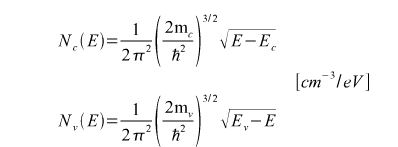Intrinsic Semiconductor
An intrinsic semiconductor, also called an undoped semiconductor or i-type semiconductor, is a pure semiconductor without any significant dopant species present. The number of charge carriers is therefore determined by the properties of the material itself instead of the amount of impurities. In intrinsic semiconductors the number of excited electrons and the number of holes are equal: n = p. intrinsic semiconductor is an undoped semiconductor. This means that holes in the valence band are vacancies created by electrons that have been thermally excited to the conduction band, as opposed to doped semiconductors where holes or electrons are supplied by a “foreign” atom acting as an impurity. Intrinsic semiconductor material is chemically very pure and possesses poor conductivity. It has equal numbers of negative carriers (electrons) and positive carriers (holes). A silicon crystal is different from an insulator because at any temperature above absolute zero temperature, there is a finite probability that an electron in the lattice will be knocked loose from its position, leaving behind an electron deficiency called a "hole".
In order to better understand the behavior of semiconductors, we need to investigate more deeply what are the electron and hole densities in the conduction and valence bands, respectively. We first need to introduce the notion of energy density of states N(E). This parameter gives the number of states (per unit volume and per unit energy) between E and E+dE: Nc(E) (respectively, Nv(E)) physically represents the “room” available for electrons (resp. holes) in the conduction band (resp. valence band). For energies that are close to the extrema of these two bands, the density of states has a quadratic dependence with E:

Where h = h/2Π is the normalized Planck constant (h=6.626.10-34Js) and mc (resp. mv) is the average effective mass of the conduction band (resp. of the valence band). For a direct gap semiconductor, mc (resp. mv) is the effective mass of an electron me (resp. a hole mh) in the crystal.
